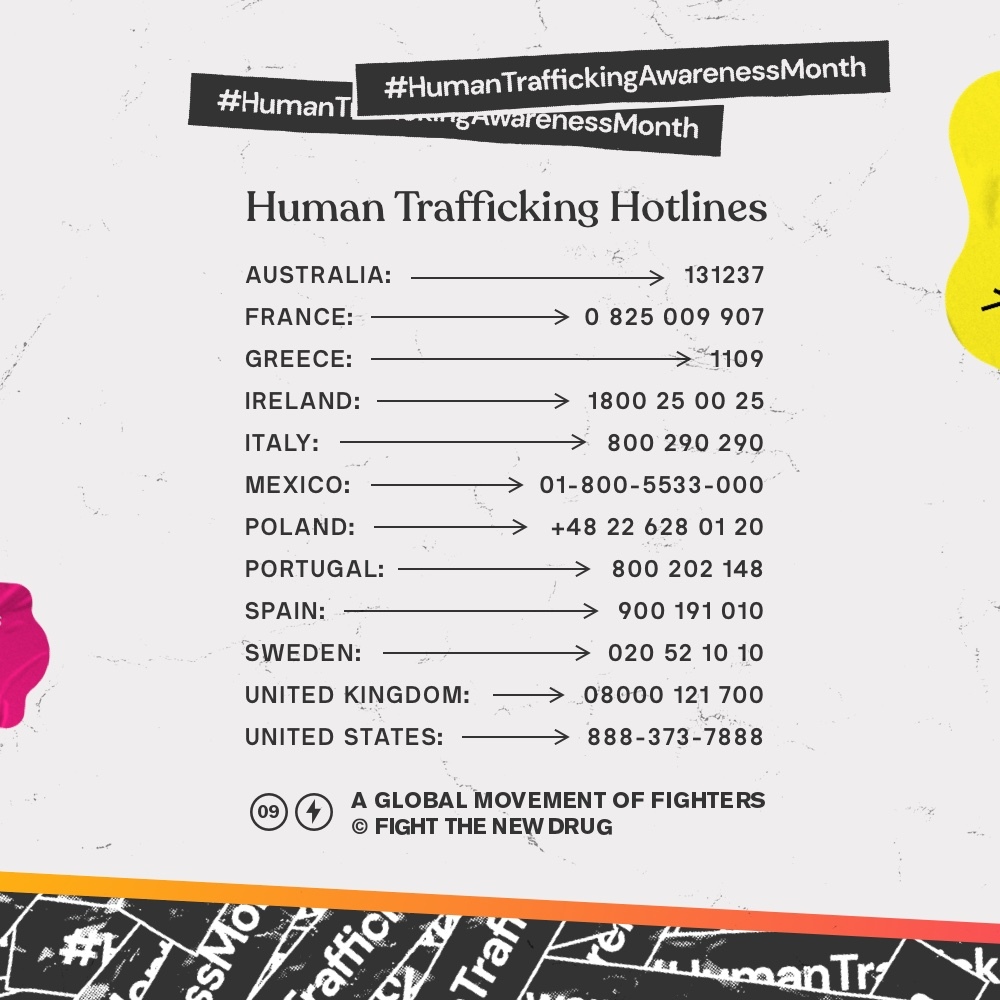This guest piece was written by Karen Countryman-Roswurm, LMSW, PhD, Founder and Executive Director of the ITE Center For Combatting Human Trafficking. 8-minute read.
Primed for Perpetration: Porn and the Perpetuation of Sex Trafficking
By Karen Countryman-Roswurm, LMSW, Ph.D., Wichita State University
“Pretty much my dad taught me a lot about what men think is important… what was most important about me…and how to survive. He watched porn and he would act that out on me…and he would have my brothers act that out on me…and his friends would act it out on me. So pretty much that was the beginning of my path to running away. And then to being prostituted…sexually exploited…or sex-trafficked like you guys taught me to see it. He [her trafficker] turned me out [sold her to others for sexual purposes]…but I already knew it…how to do it…what all it would involve. Because of my dad…his pornography…and what he did to me.
You know?”
-Lacy, survivor of sex trafficking, 17 years old
Porn And Sex Trafficking: Inseparably Connected
With a commitment to increasing our country’s capacity to more effectively identify, intervene, and promote prosperity among individuals at risk of and/or who have been subjected to human trafficking, I have spent more than two decades engaged in direct-service, education, advocacy, and research.
Specifically, in an effort to develop multi-disciplinary direct-practice resources such as the Lotus Anti-Trafficking ModelTM Domestic Sex Trafficking Risk and Resilience Assessment (DST-RRA)TM, Victim-Centered Survivor-Led Life Planning Tool (VCSL-LPT)TM and Victim-Centered Survivor-Led Goals Beliefs Change Tool (VCSL-GBC)TM, my team at the ITE Center For Combatting Human Trafficking and I have facilitated participatory research with more than 300 young people at-risk of and/or subjected to human trafficking.
In order to lay the foundation for our evidence-based resources, our two primary questions have been: 1) What do you believe puts you at risk for sex trafficking? and 2) What do you believe has helped you survive and/or overcome sex trafficking?
As to the answer regarding risk factors, characteristics, traits, experiences, beliefs, or behaviors that contributed to young people being trafficked, we identified 560 risk-related responses. Unsurprisingly, many of such factors confirmed the significant yet seemingly universal factors found in previous studies: poverty, alcohol and drug abuse within the home, sexual abuse, and running away or homelessness.
However, what our studies have and continue to reveal is a risk factor frequently ignored, left undiscussed, and in fact, hidden under the familiar blanket of shame: pornography. This is the factor that, knowing no boundaries of sex, age, race, class, or faith, has touched nearly every home across the United States.
For brief clarification, human trafficking is a type of violence that commodifies human life by exchanging the ability to abuse and/or exploit a person for something of value (e.g., food, shelter, money).
Pornography is material (e.g., pictures, videos) that depicts behavior intended to cause the consumer to become sexually excited or aroused. In an illustrative manner, Google’s definition of pornography goes on to articulate that pornography is “intended to stimulate erotic rather than aesthetic or emotional feelings.” Thus, causing the detachment of the consumers’ head, heart, and hands, it should be no surprise of the devastating consequences that pornography can cause.
When asked about what she believed put her at risk, Tabitha, a 14-year-old female who had already spent nearly two years surviving on the streets, stated the following:
“So like, I kinda feel like porn was one of the things that increased my chances of being trafficked, too. Like it made me feel like s—. Made my mom feel like s—. And was like what trained me what to do. Like my dad would straight-up watch porn in the living room while we would all be eating our dinner. My mom didn’t say s—. Like…we [her brothers and sisters] all watched that…it was f— up. Finally, from there my mom was kinda like searching for someone who would love her…but it never seemed to work out. Instead, they wanted me [for sex]. Then she hated me and kicked my a— out like I was dirty. And then you know, I knew what I had to do.”
Here and many times following, we recorded the voices of young men and women who illuminated the devastating effects of pornography in their homes.
Porn Isn’t Harmless
The reality is that pornography distorts one’s image of sex and, consequently, love. It harms not only the one directly consuming the material but also the partner or spouse. Pornography increases the chances that one will act out their sexual fantasies on another. Often another who has less power, less control.
Through the cycle of pornography-fueled physical and sexual abuse, pornography perpetuates further perpetration. Many of the individuals photographed or filmed for the use of pornography have a history of sexual abuse. Many still, while being materialized for citizens all across the world, are seemingly accepting such abuse and exploitation under the force, fraud, or coercion of a trafficker.
Pornography is the material means of sexual exploitation. Pornography is the proof, the very evidence that commercial sexual exploitation occurred. Pornography is verification of violence. And pornography is used again and again to prime, promote, and perpetuate the perpetration of boys and girls for the purpose of sex trafficking.
Watch: Karen Countryman-Roswurm, LMSW, Ph.D., Discusses the Connection Between Porn & Trafficking
In a horrified knee-jerk response to learning about the connection between pornography and human trafficking, many individuals feel the need to engage in direct outreach efforts to those exploited. Others strive to raise awareness or start their own not-for-profit agencies. But in the words of poet David Whyte (2012), perhaps the best thing anyone can do to combat abuse and exploitation is to first, “start close in.”
Start close in,
don’t take
the second step
or the third,
start with the first
thing
close in,
the step
you don’t want to take.
Fighting Back Starts With Each of Us
Beginning with a transparent analysis of oneself, the following are some of the ways I invite you to join us in combating the use of pornography as well as sex trafficking:
1. Love and respect yourself as well as those closest to you. This means demonstrating honest physical and sexual boundaries through the language you use, the images you consume, and the acts you engage in. If you struggle with the temptation of pornography use, reach out to an individual or a support community that can hold you accountable and implement a “safety plan” that promotes love rather than perpetuates the perpetration of others.
2. Be an example. Sometimes the very best way we can prevent and/or intervene in situations of abuse or exploitation is by representing the option of a healthy, safe, loving lifestyle.
3. Prevent abuse and exploitation by investing in the lives of family, friends, and/or other young people within your community. Spend quality time with children and youth in order that they will know the value of a true human connection. Encourage them to explore their thoughts, beliefs, goals, etc. Love them unconditionally, and seek to teach them about the meaning of a person’s immeasurable value and true purpose.
4. Seek to change the systemic roots that fuel a culture of sex trafficking. Challenge and oppose sexist, racist, or otherwise disrespectful remarks, jokes, or behavior. Advocate for laws and policies that protect and serve individuals who have been victimized by and/or who have survived various forms of commercial sexual exploitation/sex trafficking. Work to create equal access to resources such as education and/or employment options. While a technical response to reducing demand includes talking with men and women about the use of pornography and/or purchasing people for sexual purposes, an adaptive response requires all of us to change the larger context in which violence against marginalized populations is made acceptable.
5. Build up, respect, and support survivor-leaders and/or survivor-led organizations. Have the courage to walk alongside and promote the prosperity of individuals who are struggling to, or who have, overcome abuse and exploitation. Ensure that they are not unintentionally further harmed or re-exploited by the individuals and/or institutions that seek to help.
Click here to learn more about how porn and sex trafficking are interlinked.
About the Author
Karen Countryman-Roswurm, LMSW, Ph.D., has more than two decades of personal, professional practice and community-based research expertise in the Anti-Trafficking Movement. With various first-hand vantage points and operating from a strengths-based and social justice perspective, she has served locally, regionally, nationally, and internationally as a street outreach worker, project coordinator for gender-specific programming, therapist, community response organizer, human rights advocate, and public policy developer. Dr. Countryman-Roswurm serves as the Founder and Executive Director of the ITE Center For Combatting Human Trafficking and is an Assistant Professor in the School of Social Work at Wichita State University. To learn more about Dr. Karen Countryman-Roswurm, visit http://combatinghumantrafficking.org.
Fight the New Drug collaborates with a variety of qualified organizations and individuals with varying personal beliefs, affiliations, and political persuasions. As FTND is a non-religious and non-legislative organization, the personal beliefs, affiliations, and persuasions of any of our team members or of those we collaborate with do not reflect or impact the mission of Fight the New Drug.
Resources
-
Countryman-Roswurm, K. & Patton Brackin, B. (in press; May 2017). Awareness without re-exploitation: Empowering approaches to sharing the message about human trafficking. Journal of Human Trafficking, DOI: 10.1080/23322705.2016.1201374.
-
Countryman-Roswurm, K. & DiLollo, A. (2016). Survivor: A narrative therapy approach for use with sex trafficked women and girls. Asked to submit a manuscript as an anti-trafficking expert for peer-review for the Special Issue on the Human Trafficking of Women and Girls. Journal of Women and Therapy, 40:1-2, 55-72, DOI:10.1080/02703149.2016.1206782.
-
Countryman-Roswurm, K. (2015). Rise, unite, support: Doing “no harm” in the anti-trafficking movement. Slavery Today Journal: A Multidisciplinary Journal of Human Trafficking Solutions, 2(1):26-47.
-
Countryman-Roswurm, K. & Shaffer, V. (2015). It’s more than just my body that got hurt: The psychophysiological consequences of sex trafficking. Journal of Trafficking, Organized Crime, and Security, 1(1):1-8.
-
Countryman-Roswurm, K. (2014). Who’s pimpin’ now?: How our system is exploiting the exploited (pp. 51-56). In R. Ross (ed.), Girls In Justice. Santa Barbara, CA: Image of Justice.
-
Countryman-Roswurm, K., & Patton-Brackin, B. (2014). The journey to Oz: How practice, research, and law have been used to combat domestic minor sex trafficking in Kansas. Journal of Applied Research on Children: Informing Policy for Children at Risk, Special Issue Legal Safety Nets: The Law as a Change Agent for Children, 5, 2(8):1-17.
-
Countryman-Roswurm, K. (2014). Combating trafficking as an advanced generalist social worker. The Advanced Generalist: Social Work Research Journal, 1(1), 35-39.
-
Countryman-Roswurm, K., & Bolin, B. (2014). Domestic minor sex trafficking: Assessing and reducing risk. Child and Adolescent Social Work Journal, 31(6):521-538.
-
Dworkin, A. (1997). Life and Death: Unapologetic Writings on the Continuing War Against Women. New York, NY: The Free Press.
-
MacKinnon, C. (2006). Are Women Human and Other International Dialogues. London, England: The Belknap Press of Harvard University Press.
-
Manning, J. (2006). The impact of internet pornography on marriage and the family: A review of the research. Sexual Addiction and Compulsivity, The Journal of Treatment and Prevention, 13, 2(3), 131-165.
-
Spencer, T. Zitzman, & Butler, M. (2009). Wives’ experience of husbands’ pornography use and concomitant deception as an attachment threat in the adult pair-bond relationship. Sexual Addiction and Compulsivity, The Journal of Treatment and Prevention, 16, 3, 210-240.
-
Struthers, W. (2009). Wired for Intimacy: How Pornography Hijacks the Male Brain. Madison, WI: Intervarsity Press.




